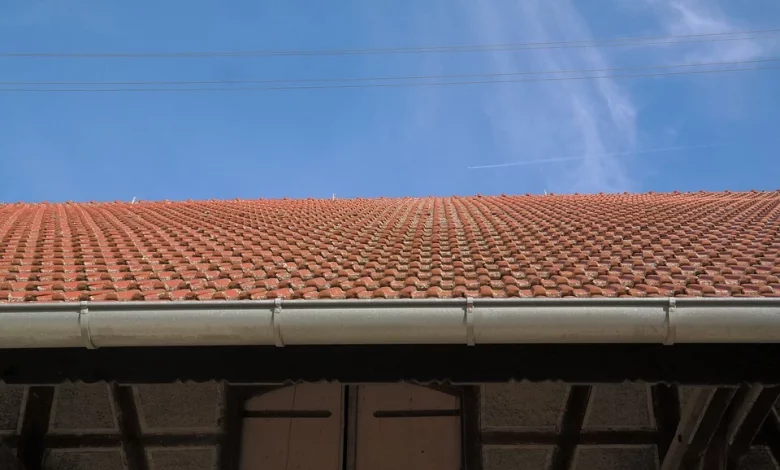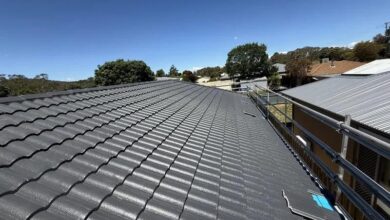Caulk vs. Sealant for Gutters – What to Use for Which Purpose

Water is vital for thriving plants (and people). Still, when it can seep into the wood features of your home, absorb concrete foundations, or leak profusely into your beautiful flower beds, it can cause significant problems for you, your family, and your wallet.
Armed with that knowledge, homeowners turn to a way to keep water channeling through their gutters instead of spilling out – and that usually involves some sort of caulk or sealant to keep water flowing exactly where it should on existing and new gutter installation.
But… How do you know whether to use caulk or sealant and for which purpose?
Let’s tackle it.
What is the Difference Between Caulk and Sealant?
Both caulk and sealant are used to fill gaps between types of building materials like wood, plastic, metal, vinyl, and fiberglass, among others. They both protect from water intrusion by creating a barrier and preventing moisture from seeping between or absorbing into those materials.
The primary difference is how pliable caulk and sealant are. Caulk tends to be more rigid and can crack or peel if used on an area or material that expands and contracts with changing weather but sealants are often more flexible and can move with the material where they are applied.
Sealants are primarily made of silicone and while you can find silicone caulking at your local hardware store, it’s commonly made from acrylic and latex.
Caulk can often be painted, which adds a more finished look to water-prone areas but if exposed to temperature swings, it can crack, shrink, and reveal a gap for water to penetrate or dry out over time and require reapplication.
Sealants, however, are better in areas prone to both hot and cold spells but any smears or spills must be cleaned using a powerful solvent – both sealant and solvent can create dangerous fumes. It is also more noticeable since it cannot be painted.
How Are Caulk and Sealant Applied?
Caulk and sealant are terms often used interchangeably since they both create a watertight seal, and they are also commonly applied in the same manner. Both caulk and sealant are sold in tube-like containers and to apply, a caulking gun is used (hence the confusion in terminology).
However, there are other types of sealants used for large, flat surfaces like decks and driveways where a long-handled brush or paint roller on a long pole is used for application. This type of sealant is sold in containers resembling paint cans.
When to Use Caulk on your Gutters
Caulk is perfect for areas that experience little-to-no temperature changes like when sealing drywall, baseboards, crown molding, around the interior installation door and window trim, and any other area where a gap exists and may need to be painted to offer a more polished look – and that does NOT fit the bill for your outdoor gutter system.
Commonly, people use silicone or mastic caulk to seal the seams between their gutter runs or the inner and outer corners of their gutters and while they work for a while, it’s almost guaranteed that they will crack and evaporate with the UV rays of the sun and temperature fluctuations.
It is not recommended to use traditional caulk to seal your gutter seams or they will begin to leak and it will require a reapplication – potentially every year.
When to Use Sealant on your Gutters
Sealant is perfect for areas that get wet often or are subjected to cold and warm temperatures like your bathroom, kitchen, and around the inside of windows. It is often used around the tub and sink to keep water from going where it shouldn’t – even the base of the toilet and any loose tiles.
It does well in outdoor settings and is a much better option when sealing the gaps between your gutter lines and corners. Made of a more elastic material, it does not break down with repeated water exposure and a wide range of temperature vulnerability, sealants may be a better option for your gutter maintenance or new gutter installation.
Conclusion
When maintaining your gutter system or conducting a brand new gutter installation, always be sure to use the right tool for the job and when it comes to sealing up any gaps or keeping water flowing in the right direction – it’s crucial to know when to use caulk, and when a sealant is more fitting for your goals.
Depending on the material your gutters are constructed from, choosing the right type of sealant is vital to extending the life of your gutters and your work. If uncertain, leave your water-blocking material application to a professional to avoid shelling out your hard-earned money on massive water damage repairs.




